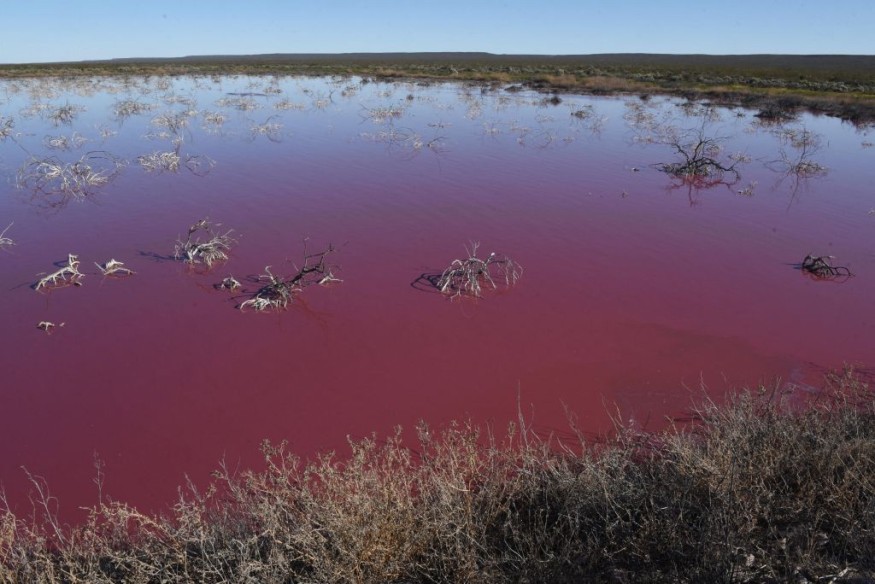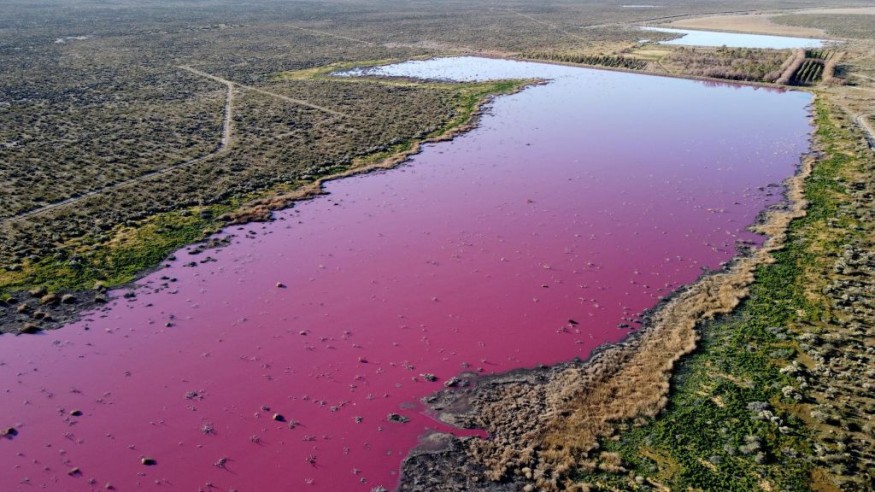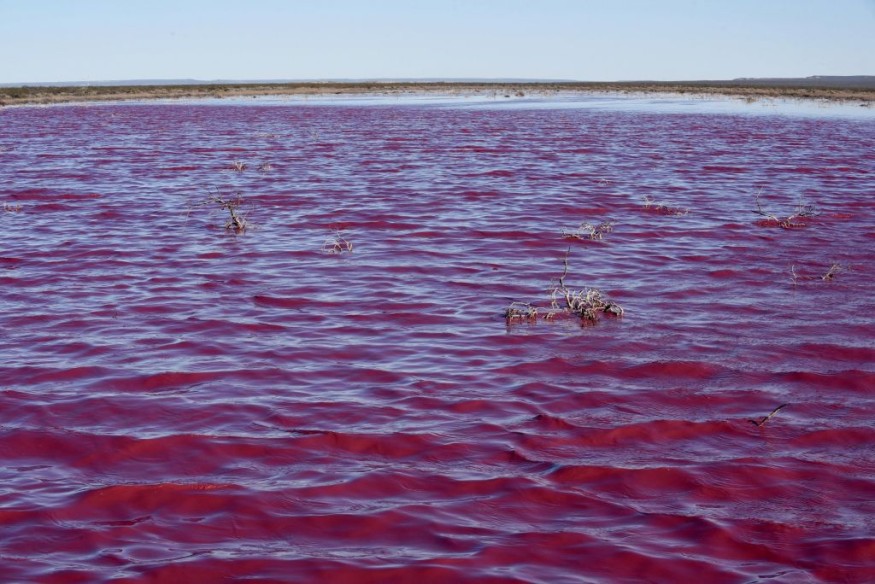
The pollution of a chemical meant to keep prawns for export has turned a lagoon in Argentina's southern Patagonia area brilliant pink, a spectacular but terrifying phenomenon that experts and campaigners blame contamination by a chemical intended to preserve prawns for export.
"The color is due to sodium sulfide, an antibacterial preservative that also contaminates the Chubut River's water table and the water supply of cities in the vicinity. The legislation requires that such liquids be treated before being discarded," Colombian engineer, environmentalist, and virologist Federico Restrepo, a local resident told AFP.
Activists claim that sodium sulfite, an antibacterial chemical used in fish farms, is responsible for polluting the Chubut river, which supplies the Corfo lagoon and other water sources in the region.
Around the river and lagoon, residents have long complained about foul odors and other environmental concerns.

Possible Poisoning
Environmental campaigner Pablo Lada blamed the government for the disaster, telling AFP, "Those who should be in control are the ones who approve the poisoning of people."
According to Lada, who lives in Trelew, about 1,400 kilometers south of Buenos Aires and close to the lagoon, the lagoon became pink last week and stayed that hue on Sunday.
Sodium Sulfite

According to Restrepo, an environmental engineer and virologist, the coloring was caused by sodium sulfite in fish waste, which is required by law to be treated before being deposited.
The lagoon, which is not utilized for recreational purposes, gets drainage from the Trelew industrial park and has previously become pink in color.
Residents in the neighborhood, on the other hand, are fed up. Rawson, a town near Trelew, has recently blocked highways used by trucks transporting processed fish waste to treatment plants on the city's outskirts.
"We receive dozens of trucks every day, and the people are wary of it," Lada added.
Protests
Because Rawson was closed due to the protest, the provincial government allowed companies to dump their trash in the Corfo lagoon.
"The crimson hue does not create damage and will go away in a few days," Juan Micheloud, the Chubut province's environmental control head, told AFP last week.
"It is not feasible to trivialize something so important," Sebastian de la Vallina, planning secretary for the municipal of Trelew, argued.
Employment Opportunity

Thousands of employment are created in Chubut province, home to 600,000 people, by processing seafood for export, primarily prawns and hake.
In the Atlantic seas within Argentina's authority, dozens of international fishing enterprises operate.
"It's true that processing fish produces work. However, these are multibillion-dollar profit corporations that refuse to pay freight to transport the trash to an existing treatment facility in Puerto Madryn, 35 miles away, or to build a plant closer to them, "Lada remarked.
Read also: Seafood's Secret Ingredient: Microplastic
© 2025 NatureWorldNews.com All rights reserved. Do not reproduce without permission.

